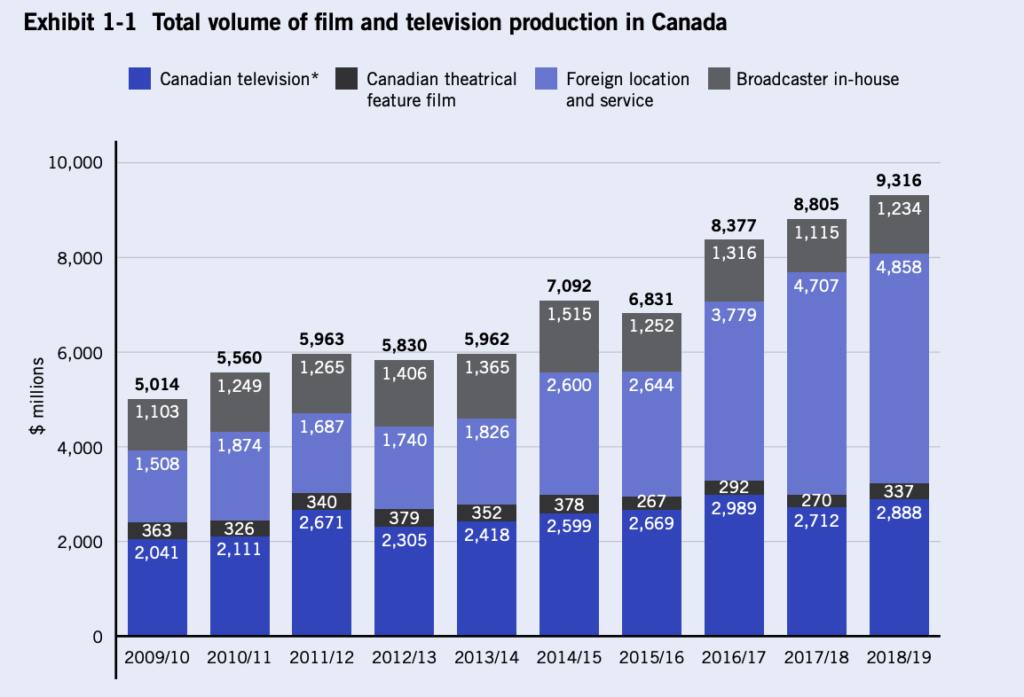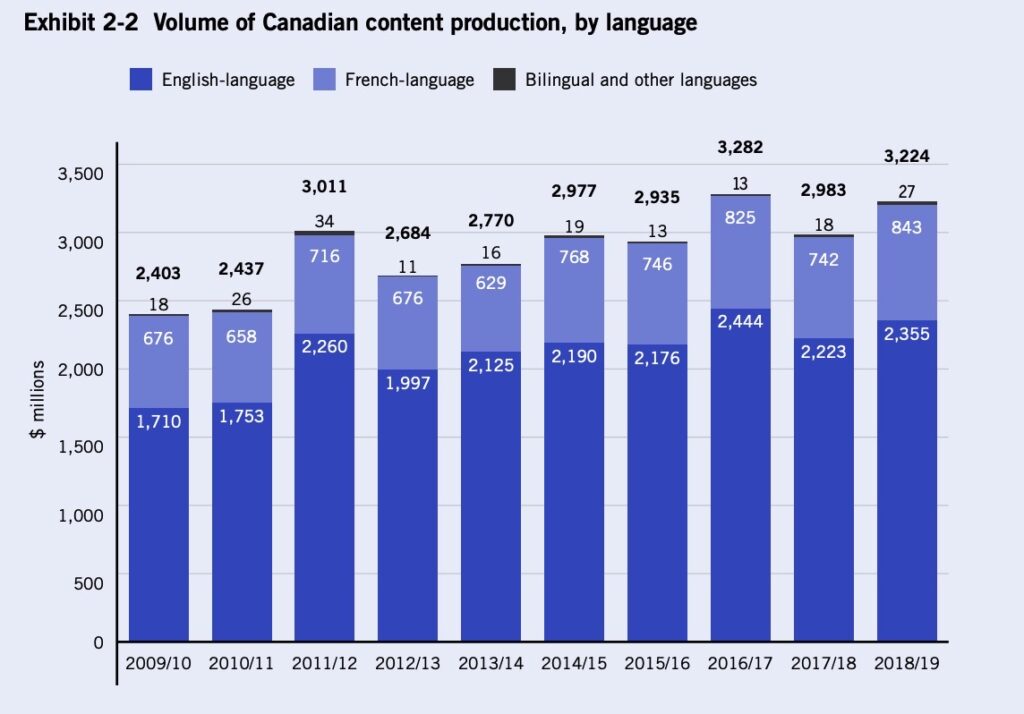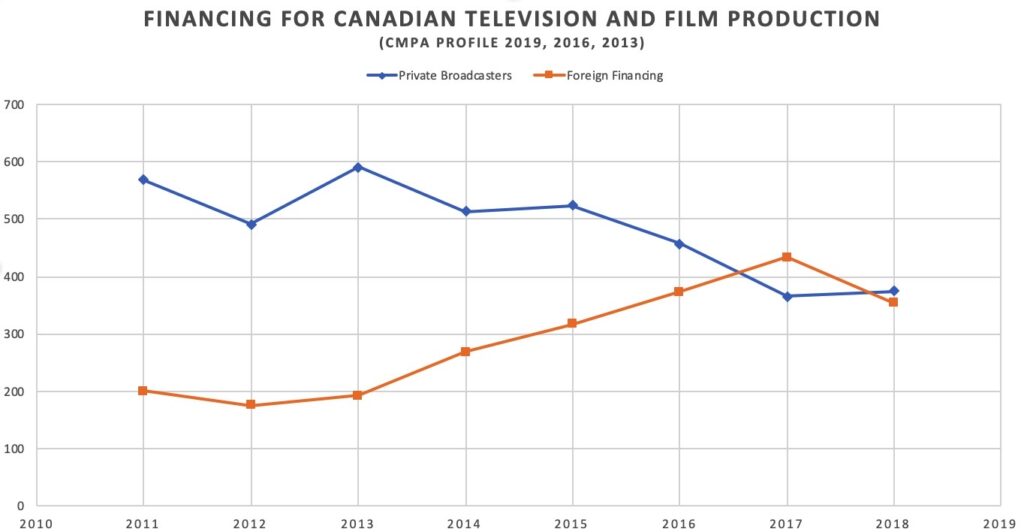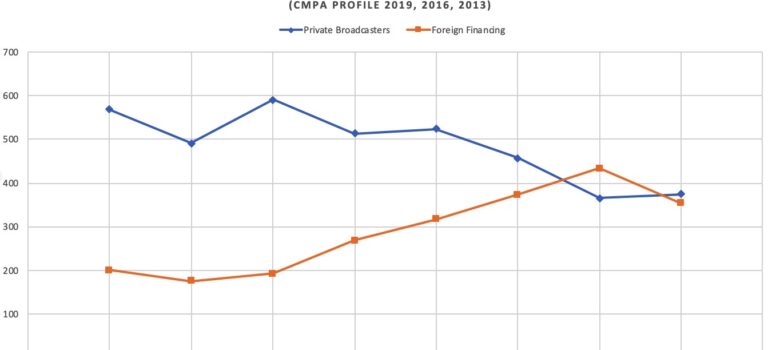Canadian Heritage Minister Steven Guilbeault has said that his top legislative priority is to “get money from web giants.” While much of the attention has focused on his ill-advised plan to require Facebook to obtain licences for linking to news articles, his first legislative step is likely to target Internet streamers such as Netflix, Amazon and Disney with new requirements to fund Canadian content and to increase its “discoverability” by making it more prominent for subscribers. Based on his comments at several town halls, Guilbeault is likely to also create new incentives for supporting indigenous and persons of colour in the sector with a bonus for those investments (potentially treating $1 of investment as $1.50 for the purposes of meeting Cancon spending requirements). Much of the actual implementation will fall to the CRTC, which will be granted significant new regulatory powers and targeted with a policy direction.
Guilbeault’s case for establishing new mandated payments is premised on the claim that support for the film and television sector is declining due to the emergence of Internet streaming services, which have resulted in decreased revenues for the conventional broadcast sector and therefore lower contributions to Cancon creation. In fact, Guilbeault recently told Le Devoir that without taking action there would be a billion dollar deficit in support in the next three years. He says that his objective is to actually generate a few hundred million more per year in local production by the Internet streamers. In other words, he’s expecting roughly $2 billion in new investment over three years in Cancon from U.S. entities due to his planned regulations (moving from a billion dollar deficit to a billion dollars in extra spending).
While Guilbeault frames these regulatory requirements as a matter of fairness and “rebalancing”, industry data over the past decade tell a much different story. Indeed, there has been record setting film and television production in recent years, much of it supported by companies such as Netflix. CRTC chair Ian Scott last year said that Netflix is “probably the biggest single contributor to the [Canadian] production sector today.” While that is not entirely true – the data suggests that Canadian taxpayers are the biggest contributor with federal and provincial tax credits consistently the largest source of financing – the claim that there is a billion dollar deficit coming or that foreign streamers do not contribute to film and television production in Canada without a regulatory requirement is simply false.
I reviewed data from the Canadian Media Producers Association annual Profile document, which is supported by Canadian Heritage and provides a full breakdown of annual spending on production in Canada. This included the most recent Profile 2019 as well as Profile 2016 and Profile 2013 (the earlier versions are not online but I have copies on hand). Taken together, the reports feature data on how the sector has changed over the past decade with the emergence of Internet streaming and the decision in 2013 by Netflix to invest in original programming.
The overall financing picture shows an industry that has had record amounts of investment in film and television production with the total amount nearly doubling over the past decade.

CMPA Profile 2019, Exhibit 1-1, Pg. 7, https://cmpa.ca/wp-content/uploads/2020/04/CMPA_2019_E_FINAL.pdf
The largest growth has come from foreign location and service production, fueling thousands of new jobs. While that is discounted by some given that the production is not certified Canadian content, I’ve posted on how certified Canadian content often involves content with little relation to Canada. Yet certified Cancon has also grown in recent years, with the top two three years for certified Cancon television production occurring over the past three years. Further, last year was the biggest year for French language Cancon over the past decade. In other words, the data tells us that Cancon is also growing in Canada, despite the decline in broadcaster revenues and without additional regulations.

CMPA Profile 2019, Exhibit 2-2, Page 23, https://cmpa.ca/wp-content/uploads/2020/04/CMPA_2019_E_FINAL.pdf
Even more relevant is the overall Canadian television financing picture. Looking at the financing situation for both English and French, the data shows a gradual decline in broadcaster support and a steady increase in foreign financing. In fact, foreign financing exceeded private broadcast support in 2017 and were nearly the same in 2018.

CMPA Profile – Financing, Sources: CMPA Profile 2019, 2016, 2013
The real story of Canadian film and television production is not lost billions or unbalanced contributions as there has been significant growth in the sector and huge contributions from the unregulated foreign services. Rather, it is how Canadian film and television production has demonstrated it can compete without regulatory intervention. In other words, web giants are already paying without interventions from the CRTC or Minister Guilbeault that may increase consumer costs, reduce competition, violate net neutrality rules, and spark tariff retaliation from the U.S.








Pingback: ● NEWS ● #MichaelGeist #Guilbeault #canada #lies ☞ Guilbeault’s Bog… | Dr. Roy Schestowitz (罗伊)
So we have a Heritage Minister that sides with Rupert Murdoch and spreads misinformation at a Trumpian pace. I’m so proud Canada has its own world-class fool.
As is usually the case, Michael Geist has trouble with the data and concepts related to Canadian television. The first two exhibits in this post are reproduced directly from the CMPA’S 2019 Profile, so there is no ambiguity there. The third graph is misleading.
In the paragraph preceding the third graph, Michael Geist speaks of Canadian television financing even though the graph itself is entitled “Financing for Canadian Television and Film Production”. He claims that foreign financing of Canadian television exceeded private sector broadcast support in 2017 and was nearly the same in 2018. In fact, private sector broadcast licence fees amounted to 375 million dollars in 2018-19 compared to 354 million dollars of foreign contributions. (Of course, this comparison leaves aside the 381 million dollars in public sector broadcast licence fees.) As his graph shows, private sector broadcast licence fees are declining over time as digital on-line services grind away at the advertising revenues so essential to the financing of Canadian content. This decline is in part due to the transfer of advertising spending to unlicensed digital services and in part due to the transfer of subscribers away from Canadian broadcasting undertakings who finance the Canada Media Fund.
As the notes to Exhbit 3-17 of the CMPA’s Profile 2018 explain, foreign financing of Canadian television production includes broadcast licence fees, minimum guarantees, advances and other forms of financing from broadcasters, distributors or other organizations based outside of Canada. There is no evidence that this financing is coming particularly from web giants, as Michael Geist asserts. It is coming from all manner of licensed and unlicensed broadcasters around the world. What is more, it has nothing to do with the location shooting in Canada by Hollywood Studios and unlicensed digital programming services, such as Netflix, which use Canada as a backdrop.
Finally, of the 354 million dollars of foreign financing provided to Canadian television production in 2018-19, only 7 million dollars flowed to French-language production. English-language producers are making pre-sales to broadcasters around the world, including many US broadcasters, while French-language producers are unable to do so because the international television market is generally resistant to French-language material. At the same time, the decline in subscribers to Canadian broadcasting undertakings (in French-language regions as well as in English-language regions) is depleting the Canada Media Fund which is so important to the financing of Canadian television drama and other underrepresented categories of Canadian programming available here. This is one of the reasons why the Canadian Heritage Minister expressed his concern in Le Devoir and is about to present a new Broadcasting Act which will address these issues.
Guilbeault’s proposals will not fix any real problems, as they are aimed at protecting the status quo.
TV is licensed and regulated because the technology limits the number of channels and, therefore, competition. Over the years various groups have complained that they do not have “fair” access to the limited number of channels or that American shows are bad for Canada. In response the government/CRTC has come up with various schemes (mandatory channels on cable, the Canada Media Fund, other subsidies and rules) to address these “issues”.
The regulation has lead to an industry (Bell, Rogers, producers and ACTRA) that uses fear-mongering to protect its vested interests, is slow to react to changes (there is still no TSN app for Fire TV, Android TV or Roku), and seems to have a motto that viewers should only have it our way.
The internet does not limit competition. In fact there are an estimated 400 million active websites right now. As a result, internet video services should be treated the same way Canada treats newspapers, book publishing and sales, and movie theatres – they do not need to be licensed or regulated.
It is time for the government to recognize that the old model is obsolete and that’s its time for the industry to take off its training wheels and compete.
TV is licensed and regulated because of its signal contribution to Canadian cultural sovereignty and national identity. It is those opposed to the recommendations of the Broadcast and Telecommunications Legislative Review Panel report concerning the Broadcasting Act who aim to protect the status quo by promoting Internet exceptionalism.
There are certain activities that Canadians do not want to submit to the unfettered marketplace. Military defense is one example. No one suggests seriously that Canada’s national defense should be subcontracted to U.S. military defense firms or the US armed forces, although this might be a more economically efficient outcome. The same argument applies to broadcasting. Section 3 of the Broadcasting Act says that the Canadian broadcasting system shall be effectively owned and controlled by Canadians and that it is a public service essential to the maintenance and enhancement of national identity and cultural sovereignty. In other words, broadcasting is one of the industries that contribute to the cultural defense of the nation. At the present time, digital broadcasting programming undertakings available on the Internet in Canada are not contributing their fair share to our culture.
The Internet does not limit competition, but the big tech digital broadcasting undertakings that dominate the Internet do. The Internet’s culture of “permissionless” innovation has been abused and transformed into the centralized, controlled network of today. (See Akash Kapur’s article in the November 2-3, 2019 issue of The Wall Street Journal.) Without the illegal maneuvers, such as the anticompetitive buying of potential rivals, there might not be any such big tech digital companies on the Internet. (See Tim Wu’s article in the August 4, 2020 issue of the New York Times.)
Economic libertarians should recognize that the old model of the Internet is obsolete and that’s it’s time for the Canadian government to create a level playing field for the benefit of all Canadians.
The Canadian content rules were introduced around 1970. Prior to that the rules required Canadian owners because they didn’t want American broadcasters to own the limited number of channels.
Cultural sovereignty was the justification of the content rules. What did they achieve? Not much as Canadians continued to watch American shows and largely ignore the mostly mediocre Canadian shows that resulted from the Canadian content rules.
Since then the Canadian media players have continued to wave the cultural sovereignty flag as justification for expanding subsidies and regulations. At the same time they largely ignored viewers’ complaints about costs and choices.
The internet brought new competitors for viewers. These competitors had the content viewers wanted at a lower price and with much more flexibility and, as a result, viewers flocked to these services.
The Canadian media players response was to continue to try and protect their turf by flying the Canadian sovereignty flag and complaining that internet companies offering a better product is unfair competition.
The government’s proposals do not address the real internet issues about privacy and whether a few companies have too much power. Instead they are meant to maintain the status quo, a most unlevel playing field, where a few benefit at the expense of most Canadians.
its really great to read lke kind of info very good
https://www.apkiweb.club/2020/09/telenor-microfinance-.html
…
Great article! Thanks